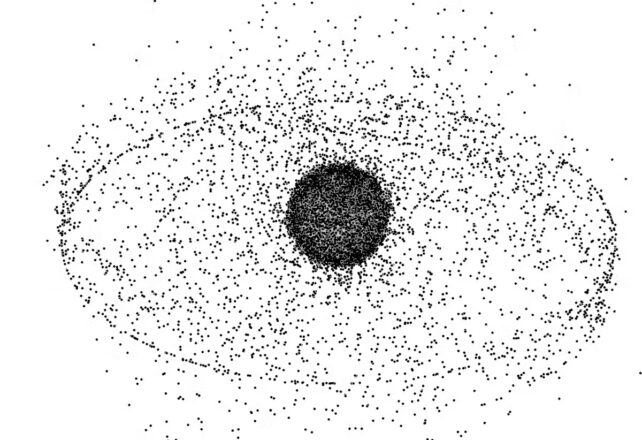Right now of 12 months, because the solar rises over Antarctica, a “gap” opens up in Earth’s ozone layer.
The ozone layer is an important planetary boundary that protects all life on Earth from the solar’s damaging ultraviolet radiation. However as our analysis exhibits, a collection of bizarre occasions lately induced ozone holes that lasted longer.
The Montreal Protocol, which got here into pressure simply 4 years after the ozone gap was found in 1985, has been enormously profitable in stopping many ozone-depleting gases from getting into the ambiance.
However the gap will proceed to open every year for at the least one other 4 a long time due to the lengthy lifetimes of gases emitted final century.
Ozone depletion can also be linked with local weather change, and there are different rising points which may have an effect on ozone restoration. These embody extra frequent mega-wildfires attributable to local weather change, emissions from rocket launches and extra satellite tv for pc particles burning up within the higher ambiance.
All this means ozone depletion is removed from a solved drawback.
Why ozone issues
Most atmospheric ozone resides within the stratosphere, at round 10-50km above Earth’s floor, the place it absorbs the solar’s ultraviolet-B rays.
In New Zealand and Australia, summertime peak UV ranges are larger – generally by as a lot as 30 % – than at comparable latitudes within the Northern Hemisphere.
This is because of decrease ranges of air air pollution, barely decrease ozone quantities traditionally and proximity to the solar, which is nearer throughout Southern Hemisphere summers.
New Zealand and Australia even have the highest melanoma charges on this planet. That is partly due to the upper UV ranges, however there are different contributing components, together with improved prognosis attributable to elevated consciousness.
If the Montreal Protocol had not been applied, melanoma charges could be considerably larger at this time.
How the ozone gap contributes to local weather change
Although most ozone-depleting gases at the moment are banned, it can take a long time earlier than they’re gone from the stratosphere.
Within the meantime, the ozone gap continues to type above Antarctica every spring, inflicting cascading modifications in temperature, winds and rainfall patterns throughout the Southern Hemisphere.
Ozone depletion causes the prevailing westerly winds at southern mid-latitudes (the “Roaring Forties”) to strengthen and shift towards Antarctica throughout summertime. This has elevated floor melting on Antarctic ice cabinets and is altering summertime rainfall and temperature patterns in New Zealand and Australia.
Whereas the ozone gap drives local weather change, safety and restoration of the ozone layer has further advantages for the local weather.
Many ozone-depleting gases, comparable to chlorofluorocarbons (CFCs) and hydrofluorocarbons (HFCs) are additionally potent greenhouse gases. By phasing out these gases, the Montreal Protocol has helped the world keep away from a catastrophic collapse of the worldwide ozone layer, and likewise restricted international warming.
One examine estimated the Montreal Protocol delayed the primary ice-free summer season within the Arctic by as much as 15 years.
Ozone depletion and local weather change are interlinked points. Whereas ozone depletion impacts Southern Hemisphere local weather, international ozone restoration is in flip affected by emissions of dominant greenhouse gases comparable to carbon dioxide, nitrous oxide and methane.
Technological improvements carry new threats
The invention of the ozone gap in 1985 was a serious shock. Whereas the alarm bells had been sounded within the 1970’s that CFCs destroy stratospheric ozone, scientists did not predict the existence of the big gap above Antarctica.
It was some years after the ozone gap was found that scientists started to grasp simply how ozone depletion works within the chilly Antarctic stratosphere.
The Montreal Protocol is arguably probably the most profitable environmental treaty, however the ozone story brings continuous surprises. The timing of ozone restoration relies upon partly on future emissions however there are different contributing components.
Current analysis exhibits mega-wildfires such because the Australian bushfires of 2019 can contribute to ozone depletion. A rise in civilian rocket launches is predicted to place extra ozone-depleting gases and aerosols into the stratosphere.

Increased quantities of particles from satellite tv for pc re-entry could contribute to ozone loss by introducing aerosols into the higher ambiance.
On high of those points come controversial “geoengineering” proposals, whereby aerosols are intentionally injected into the stratosphere to cut back the speed of world warming.
This could possible deplete ozone additional and any such initiatives should be given cautious thought – together with myriad different issues earlier than such proposals are applied.
Historical past tells us technological innovation can carry options (such because the alternative of CFCs by non-ozone depleting gases) but additionally unanticipated penalties. Removed from being a “solved” Twentieth-century drawback, ozone stays an essential challenge, albeit in new and beforehand unimagined methods.![]()
Laura Revell, Affiliate Professor in Environmental Physics, College of Canterbury; Dan Smale, Principal Technician, Nationwide Institute of Water and Atmospheric Analysis, and Richard McKenzie, Emeritus, Nationwide Institute of Water and Atmospheric Analysis
This text is republished from The Dialog below a Inventive Commons license. Learn the unique article.





